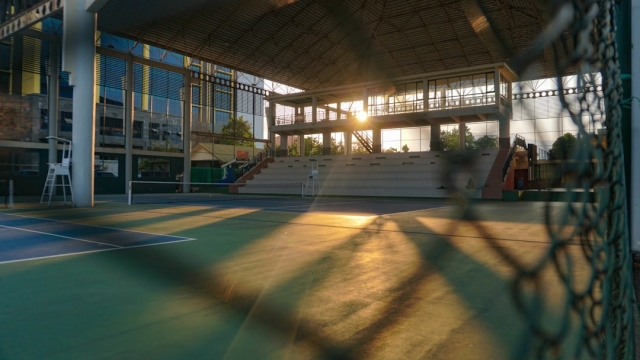Padel is a dynamic racquet sport that has gained immense popularity across the globe, appealing to players of all ages and skill levels. Combining elements of tennis and squash, padel is typically played in doubles on a smaller court, making it an accessible and engaging game. As its popularity continues to rise, understanding the specific requirements for constructing a padel court becomes essential for clubs and enthusiasts alike. One of the key aspects of this construction is the dimensions of a padel court, which play a crucial role in the gameplay experience.
Standard Padel Court Dimensions
The dimensions of a padel court are standardized to ensure consistency and fairness in play. A typical padel court is rectangular, measuring 20 meters in length and 10 meters in width. This size accommodates four players comfortably, allowing for dynamic movement and strategic gameplay. The court is enclosed by walls, which can be made of glass or solid materials, typically reaching a height of 3 meters at the sides and 4 meters at the back. This design not only defines the playing area but also enhances the game’s unique characteristics, such as the ability to play the ball off the walls.
Additionally, the net that divides the court is set at a height of 0.88 meters in the center and 0.92 meters at the ends. This slight elevation ensures that the ball maintains a suitable trajectory during play, contributing to the fast-paced nature of the game. Markings on the court include service boxes and a center line, all meticulously defined to facilitate fair play and scoring.
Construction Guidelines for Padel Courts
When constructing a padel court, it is essential to adhere to the established dimensions for optimal performance. The layout should include the specified court length and width, ensuring that there is adequate space for players to move freely. The surface material is another critical consideration. Common choices include artificial grass, concrete, or asphalt, each offering unique playing characteristics. Artificial grass is particularly popular due to its cushioning effect and lower maintenance needs, making it suitable for both recreational and competitive play.
In addition to the court surface, the quality of the walls is vital. Glass walls allow for visibility and spectator engagement, while solid walls can provide a different playing experience. The installation of proper drainage systems is also crucial, especially in outdoor settings, to prevent water accumulation that could affect gameplay. Lighting is another important feature, ensuring that matches can continue during low-light conditions, enhancing the court’s usability.
Differences Between Indoor and Outdoor Padel Courts
Understanding the differences between indoor and outdoor padel courts is essential for players and constructors alike. While the fundamental dimensions of a padel court remain the same, variations can occur based on environmental factors. For instance, outdoor courts may require additional considerations, such as wind resistance and sun exposure. The materials used for outdoor surfaces need to be durable and weather-resistant, while indoor courts can provide more controlled conditions, focusing on player comfort and experience.
Another consideration is the height of the ceilings in indoor facilities. Ideally, ceilings should be at least 6 meters high to allow for overhead shots without obstruction. This height ensures that players can use all aspects of the game, including high serves and lobs, which are integral to padel strategy. Additionally, the placement of walls may vary slightly depending on whether the court is indoors or outdoors, as outdoor courts often have more space around them to accommodate spectator seating and other amenities.
In conclusion, understanding the specific padel court dimensions and construction guidelines is crucial for anyone looking to build or play on a padel court. By adhering to these standards, players can enjoy a consistent and enjoyable experience, regardless of whether they are playing indoors or outdoors. For more information about padel court dimensions and related topics, feel free to explore resources available online, such as Mondo Padel.



